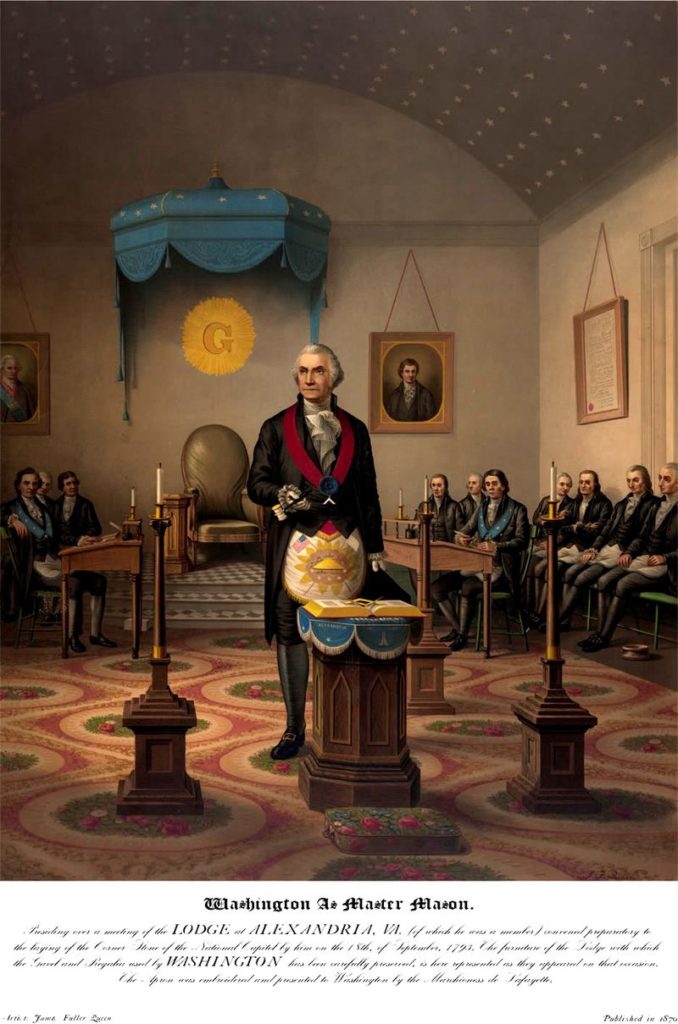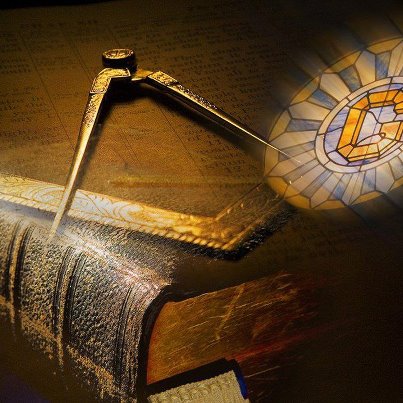
Guest Post by Duncan Burden
The basis that Freemasonry dates back to ancient Egypt or Biblical times comes from two viewpoints, frequently one used to support the other, but both being academically questionable.
The first viewpoint is from literal interpretations of specific material, often very early manuscripts that are linked to Masonry.
The earliest material that appears to be describing an organisation of ‘Masons’ and directly uses terms recognisable to modern Freemasonry, would be such documents as the Regius Poem (or the Halliwell Manuscript) and the Matthew Cooke Manuscript.
These two documents were both composed around the 15th century and are accepted as being written to support bodies of Masons who are gathered in what are commonly now called ‘Operative Lodges’. These are groups of actual working Stonemasons who gathered into small guilds to work and teach collectively. Modern Masonic lodges are, obviously, not made up of actual Stonemasons, but of people from different occupations, and are referred to as ‘Speculative’, rather than ‘Operative’ Masons.
These documents, such as the Regius Poem and the Matthew Cooke Manuscript, would have been used by Operative Lodges to achieve several things.
- Act as a list of rules for the Lodge, including moral and ethical codes conduct, requirements of membership and professional progression and rules of occupational behaviour and duties (mostly practical rules on health and safety and training).
- Act as a document of authority, representing a Charter for which the Lodge could officially operate under.
- Establish, or portray, a historic value to the Lodge and/or the trade of Masonry, for both marketing and gaining cultural approval.
It is the last point that has supported the misunderstanding of the rhetoric of these documents, as in both the Regius Poem and Halliwell Manuscript there is a colourful history of the development of Masonry, where a linage is traced from the Ancient Egyptians through to England and the English King Athelstan. In the Halliwell document in particular there is greater detail, tracing the progression of Masonry, and its art of Geometry, from the Biblical depiction of creation, to ancient Greece and on to the Egyptians, interspersed with Biblical events such as the Tower of Babel and King Solomon’s Temple, but then on to normal history of moving to France and again England and King Athelstan.
The problem is that some people have read these as real explanations, possibly even by some of those who later copied and perpetuated them, but it is extremely unlikely that those who composed them, and any educated person of the time (and later) who read them, ever expected them to be taken literally. The reason for this assertion is due to the quality of the rhetoric, and composition, and when they were written.
During this period, even up until the early 19th century, this style of writing (when composing a supposed history of a ‘concept’) was a common and simple story-device to express a ‘homage’ to the antiquity of an idea or organisation. This was such a common way of writing that for most readers of the period it would not have deemed necessary to add ‘this is not a literal, or believed, account of the history’, as it would have been seen for what it was, a linguistic expression of intellectual appreciation.
In modern terms, the principle of thought behind this explanation would be like saying ‘We like stonemasonry, and obviously the act of building with stone goes back all the way to ancient culture and even is present in our religious literature – so surely stonemasonry can be seen to an appreciated art throughout this time, and should be appreciated for this reason’.
The understanding of this literally style is recognisable even with Anderson’s own version of the history of Freemasonry in his 1723 book of Constitutions, as again, it was not meant, or expected, to be taken literally, but just this style of literal expression.
The trouble is this style of writing doesn’t exist anymore, and began to die away during the middle of the 18th century, just as the skill of reading become more open to all classes of society, including those who would have taken the words literally, and so the confusion began and perpetuates today.
The second viewpoint can be split into two parts.
- An argument is often presented that because Freemasonry follows a concept that could also be seen in, say, ancient Rome, and because it is also seen there, then therefore Freemasonry must have originated in Rome.
This argument is flawed as it is the same as saying if one ancient village has proven it can count to ten, and then another village has counted to ten, then the first village MUST have taught the second, but in reality it is simply that counting to ten is a basic concept and one village just managed to master it first.
As such, just because Freemasonry works on the principle of supporting, say, charity and ethics, (two common ideals of cultured society), then to find another society supporting the same principles in pre-history doesn’t prove Freemasonry existed back then, but rather supports the notion that society acknowledges the culture we have of appreciating these qualities.
- Another argument is presented that because classical symbols are used in modern Freemasonry, which echo those of an/the earlier society then it confirms that Freemasonry must have existed back then.
Not true. With a simply study of the development of Masonic rituals, and the adoption of its symbols, it shows that at the beginning of Speculative freemasonry, especially from material of the late 17th and early 18th century, these terms and symbols don’t exist. Instead we can see how they were later adopted when modern Freemasonry began to be more defined and regulated. As such, there is no proven line of symbolic use, but rather the common concept of retrospective appreciation.
This use of symbols is evident today, for example, the Rod of Asclepius a classical symbol attributed to medicine is frequently used for modern medical companies and organisations, this does not mean that the company dates back to ancient Greece, they simply draw the parallel between the classical value of the symbol and their modern intentions.
As such, there is no actual evidence that Freemasonry does, or really attempted to claim, that it ever dated literally back to ancient times. At most, an argument could be offered that the principles of which Freemasonry supports do date back to classical, possibly ancient periods, but simply because they are basic principles of civilised culture and are still relevant and appreciated.
For those who claim that it is the very rhetoric and structure of Masonic rituals that provides the evidence, again should really look at the development of Masonic rituals, and note that the classical elements did not get added until after Speculative Freemasonry was established, and that no uniformity existed until Speculative Freemasonry was appreciated on a international scale.
So it is like saying because Las Vegas has a pyramid, Las Vegas was situated on the same principles of the Pyramids of Giza, when in reality Las Vegas was situated for many other reasons that predate their own pyramid construction and even then the pyramid was added later for reasons of its own, but at least with a homage to Egypt and peoples passion for the mysterious.
For further posts on ‘What is Freemasonry?’, please read: What if Freemasonry? And 10 Common Myths on What Freemasonry Isn’t.
.
~Guest Post by Duncan Burden
Duncan Burden has been a Freemason for most of his adult life and is a member of various Masonic bodies, such as the Royal and Select Master Masons, and Operative Masons. He is also a member of various Masonic Chivalric Orders, including the Knights Templar and Knights of the Red Cross of Constantine.
.
.

